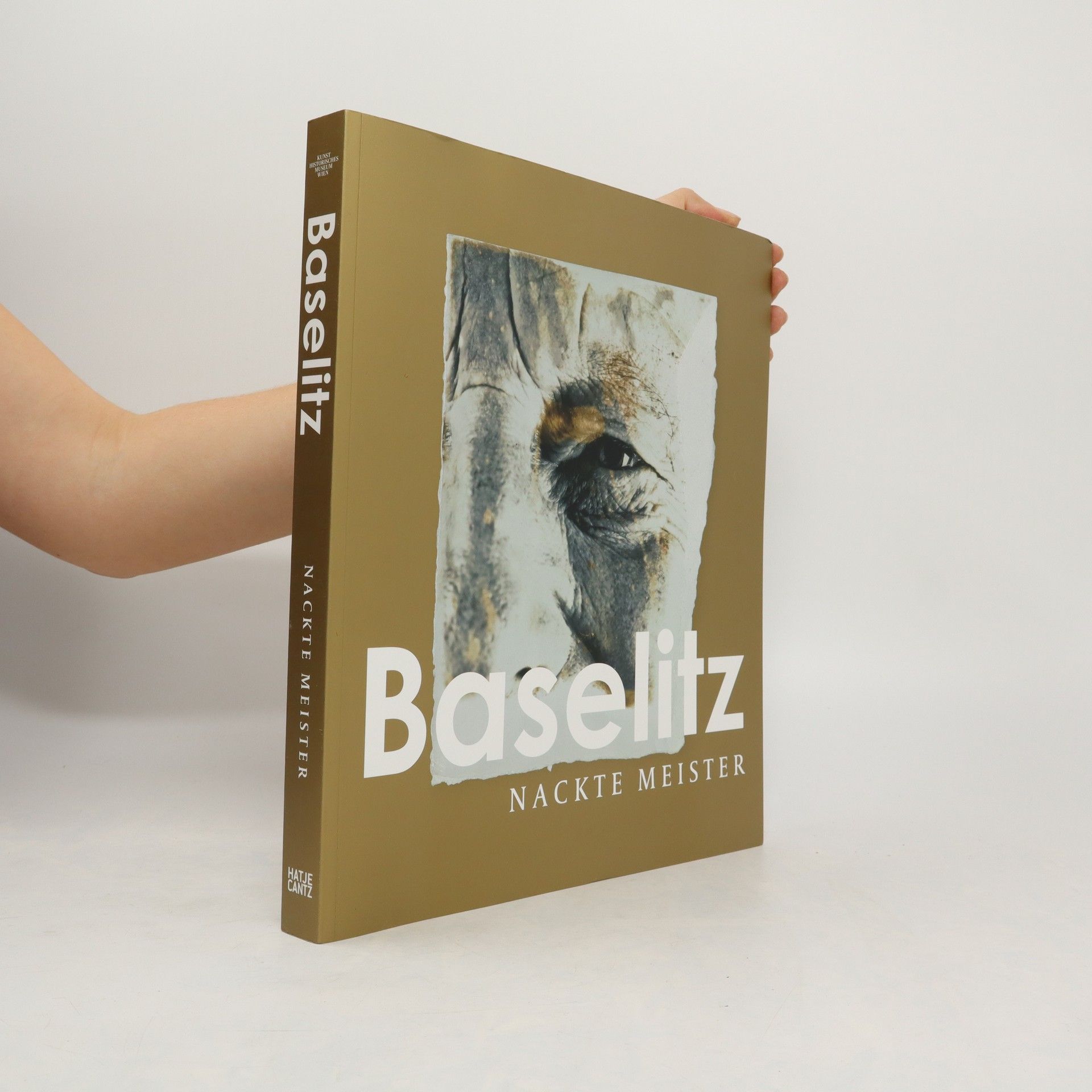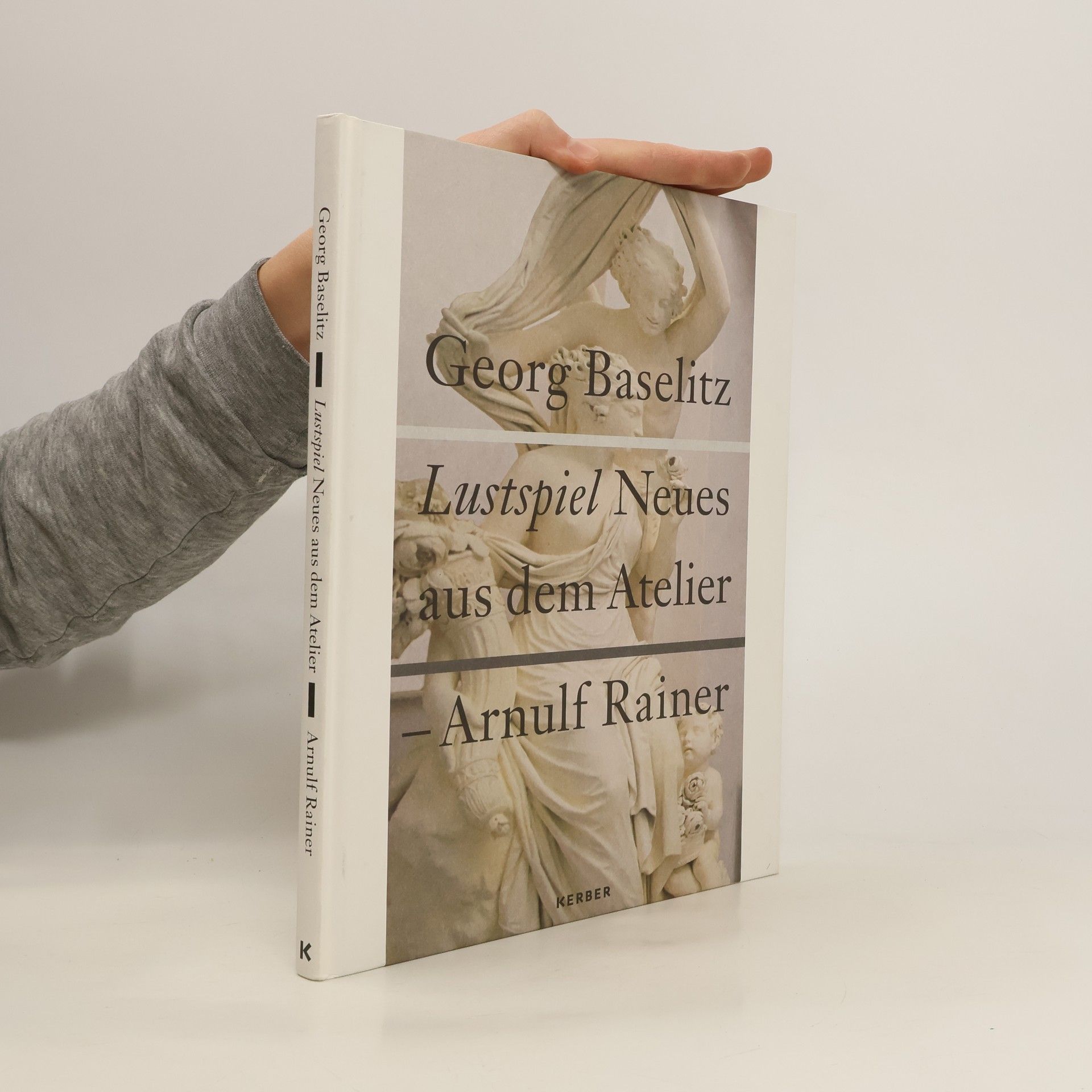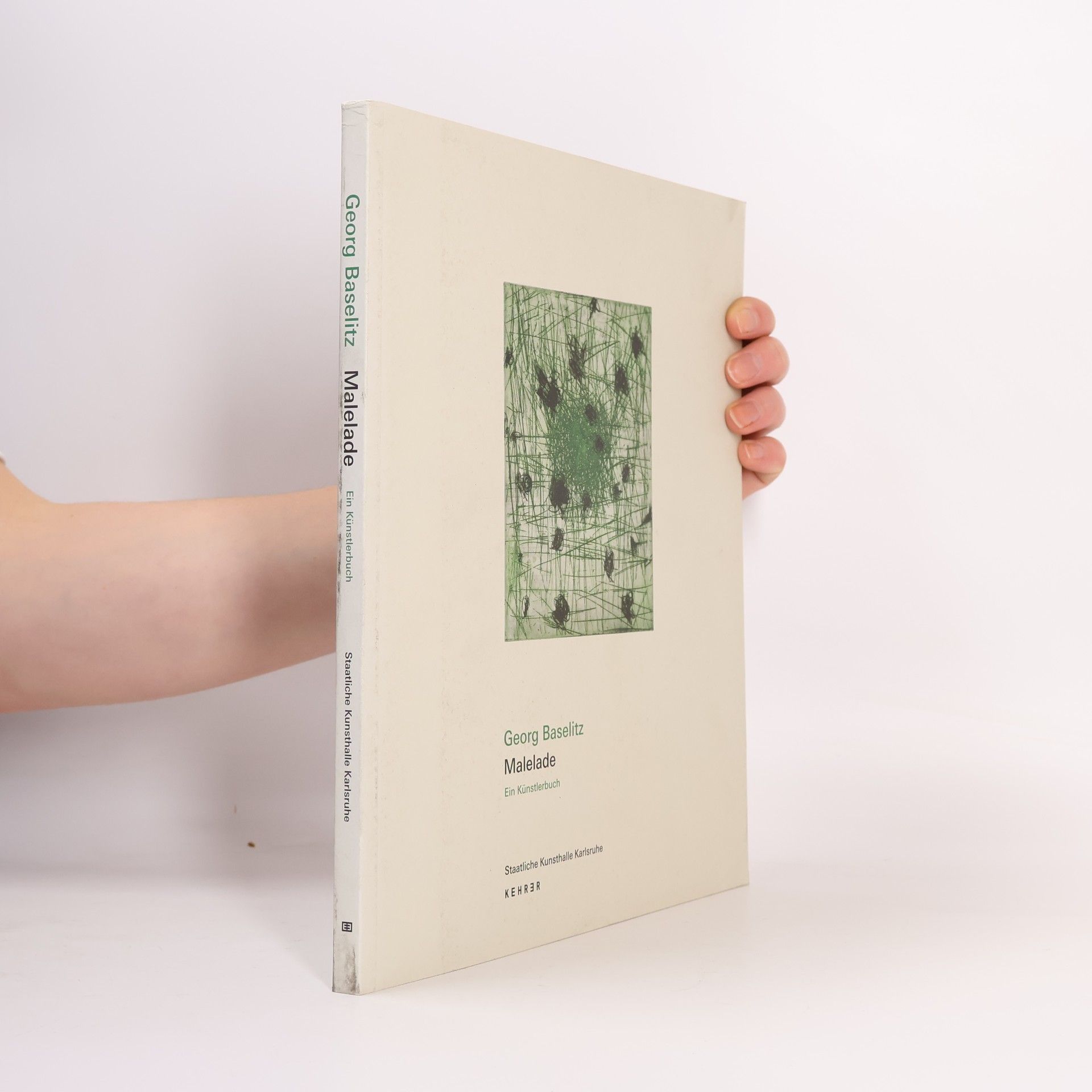Georg Baselitz Book order
Georg Baselitz is celebrated for his deeply expressive approach to painting and his distinctive reimagining of the human figure. His works are characterized by bold colors, dynamic brushwork, and a radical exploration of perspective, famously inverting his subjects. This deliberate artistic choice compels viewers to reconsider their usual perception of an image, shifting focus to the formal elements and intrinsic content rather than immediate recognition. Baselitz's art is profoundly rooted in post-war German society, reflecting both personal experiences and broader cultural and historical shifts.
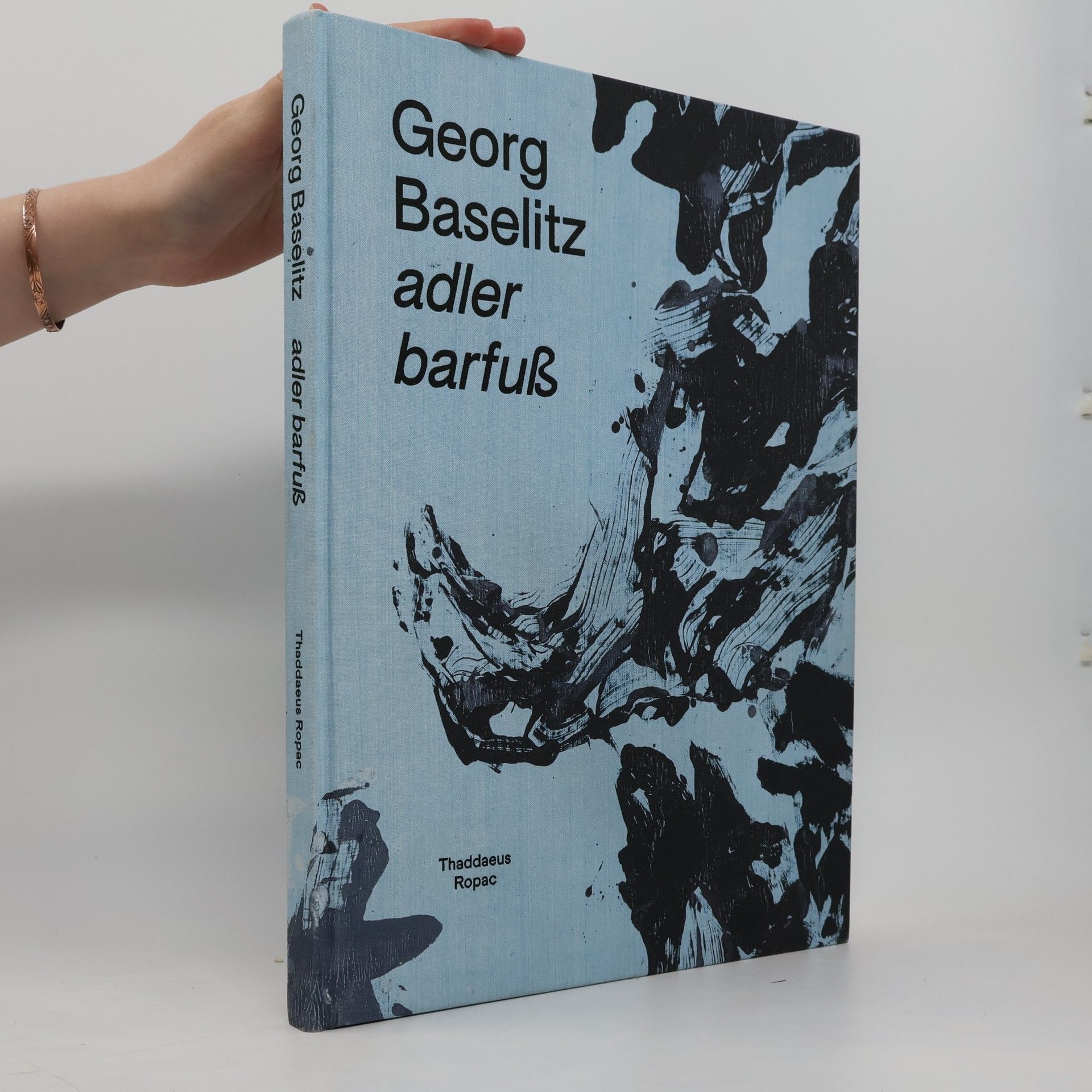



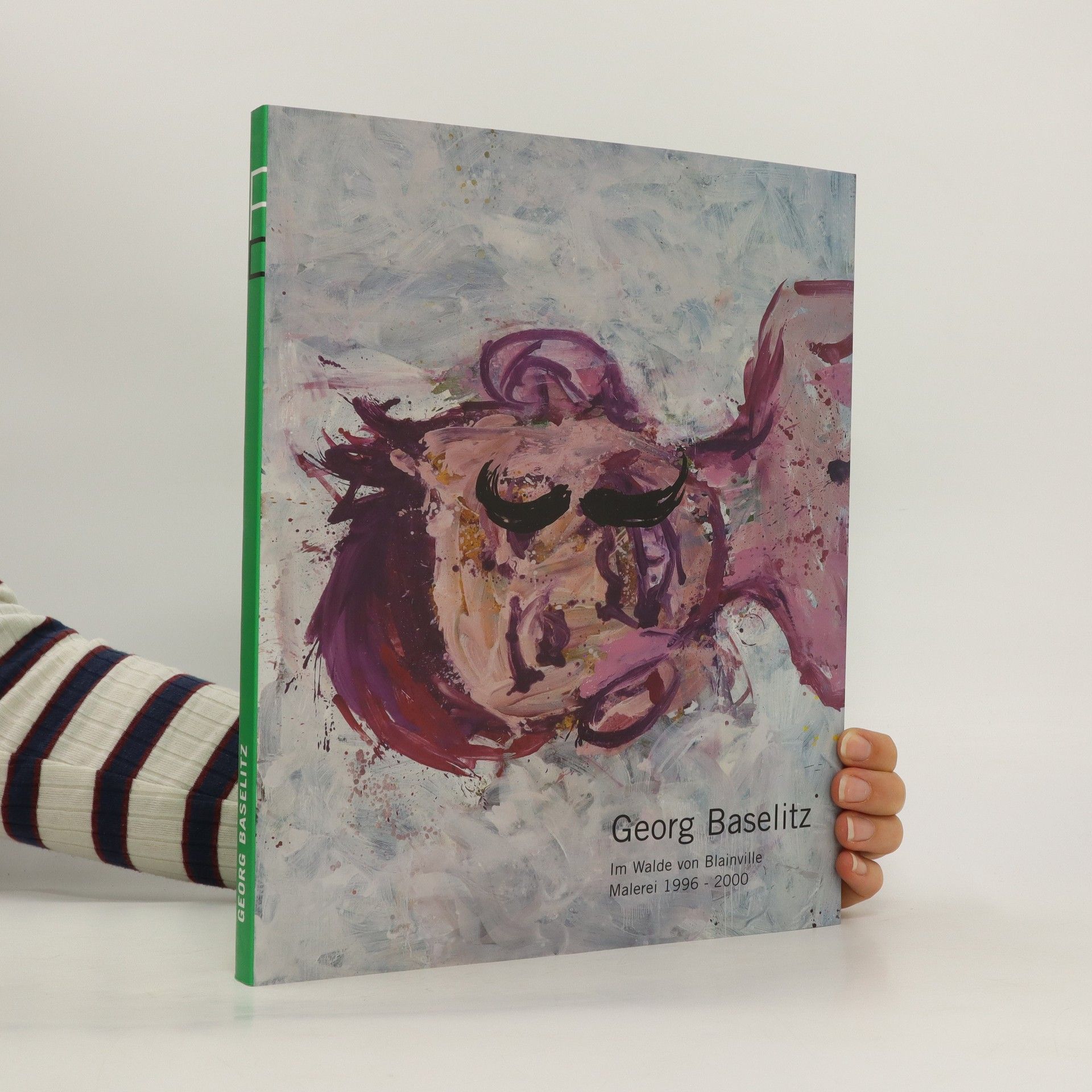

- 2024
- 2023
An exploration by an artist and writer duo of a fundamental constant in the history of humankind: rage, and its impact on the world. Rage and obstinacy are close relatives--and fundamental categories in the work of both Georg Baselitz and Alexander Kluge. In World-Changing Rage, these two accomplished German creators explore links and fractures between two cultures through two media: ink and watercolor on paper, and the written word. The long history of humankind is also a history of rage, fury, and wrath. In this book, Baselitz and Kluge explore the dynamism of rage and its potential to rapidly grow and erupt into blazing protests, revolution, and war. The authors also reflect the melancholy archetype of the Western hero (and his deconstruction) against the very different heroic ethos of the Japanese antipodes. More powerful than rage, they argue, is wit, as displayed in the work of Japanese master painter Katsushika Hokusai. In this volume, Baselitz repeatedly draws an image of Hokusai, depicting him with an outstretched finger, as if pointing towards Europe in a mixture of rage, wrath, irony, and laughter, all-too-fleetingly evident in his expression. A unique collaboration between two of the world's leading intellectuals, World-Changing Rage will leave every reader with a deeper appreciation of the human condition.
- 2023
Georg Baselitz im Dialog mit den Alten Meistern: Das Kunsthistorische Museum Wien hat den Maler und Bildhauer zu einem visuellen Gespräch eingeladen. Er selbst traf die Auswahl der Werke, wobei er sich ausschließlich auf den Akt, auf die nackte Figur konzentriert hat. Um diesen menschlichen Elementarzustand - seit jeher zentrales Thema der europäischen Kunst - kreisen Ausstellung und Katalog. Seit seinem Frühwerk arbeitet Georg Baselitz mit einem ausgeprägten kunstgeschichtlichen Bewusstsein, beeindruckt vor allem vom Manierismus und dessen Regelverstößen. In der hier vorgestellten Begegnung der Werke von Georg Baselitz mit historischen Bildern idealschöner Figuren des Kunsthistorischen Museums ergeben sich spannende Einsichten in die Geschichte der Aktmalerei sowie in die Aktualität von Malerei selbst. Der Künstler wirft so grundsätzliche, uns alle betreffende Fragen auf und öffnet in den Begegnungen der Werke einen herausfordernden Erfahrungsraum.
- 2023
Georg Baselitz: Peintre – Graveur IV
Werkverzeichnis der Druckgraphik 1989–1992
- 2020
Rousseau s Academy by Georg Baselitz There is a remarkable painting in the Picasso room at the Kunstmuseum in Basel: a full-length portrait of Guillaume Apollinaire with his muse, Marie Laurencin. It was Henri Rousseau who painted this wonderful picture. Only I had remembered it as a self-portrait of Rousseau with Madame Rousseau. Marie Laurencin was Apollinaire s muse, Clémence Rousseau was Rousseau s muse. As it happens, Franz Marc painted a portrait of Rousseau for Der Blaue Reiter. And Picasso also had a self-portrait by Henri. There s a quite intimate photograph, taken by André Gomés, of Picasso holding Rousseau s self-portrait in his right hand and the portrait of Rousseau s wife in his left hand. Picasso, that constructor of novel objects and audacious paintings, loved Rousseau, the painter of things in rigidified grace. Even Rousseau s gaze in his self-portrait is stiff, directed at his own work, in which objects that we ourselves are familiar with look different - Gothic, Byzantine, somehow not the way we are used to seeing them. It wasn t just the Egyptian Picasso, other image constructors - Kandinsky, for instance - also had pictures of Rousseau. Vasily had the little canvas The Painter and His Wife (1899). De Chirico drew Picasso and friends sitting beneath Rousseau s self-portrait with palette. And didn t Beckmann paint Rousseau s hot-air balloon and his street? I myself have Rousseau s red lithograph The War (c. 1895), which was also done by Ensor and by Uccello; there s something similar by Böcklin and also by Stefano della Bella. I have painted a lot of portraits of my wife and myself in recent years, many showing us dressed as others - sometimes as my parents, sometimes as Lenin and Stalin, but mostly as Otto Dix s parents. That double portrait of Dix s parents is also in the Basel Kunstmuseum, with another version in Hanover. So it was to be that kind of double portrait of E
- 2020
Two modern renaissance men pay homage to the medieval tale of Parsifal From Wolfram von Eschenbach's epic of chivalry to Richard Wagner's opera, from the knight as fool to the fool as savior, the story of Parsifal has struck deep chords with artists over the centuries. In this collaboration, Georg Baselitz's studies for a 2018 production of Parsifalat the Munich State Opera (2018) are paired with Alexander Kluge's responses to Baselitz's drawings, through stories in which he filters out individual elements from Eschenbach's epic, such as Parsifal's native wit or the figure of the Knight of the Cheerful Countenance. The result is an ongoing communication conducted over long periods of time: aspects of the Middle Ages can be found in the present. The volume concludes with Tristan Marquardt's text "Excerpts from a Parsifal Lexicon," which shows how far our contemporary language has diverged from Eschenbach's in terms of meaning and sound.
- 2014
Eines der prägenden Merkmale im Schaffen von Georg Baselitz (geb. 1938) ist die kritische Reflexion des eigenen Werks vor einem veränderten Zeithintergrund. In den vergangenen zehn Jahren hat diese Selbstanalyse einen breiten Raum eingenommen. Baselitz unterzieht darin die ursprünglichen Fassungen einem erneuerten Zugriff. Dem einst kraftvollen Duktus und gesättigten Farbauftrag stellt er in den "Remix"-Bildern die luzide Transparenz eines Farbdrippings gegenüber, das die Motive nachgerade verflüssigt und zeichnerisch auflöst. Diese Leichtigkeit der Herangehensweise wirkt wie eine Befreiung der Darstellung von Inhalt und Bedeutung, die das eigene Denken und Schaffen in eine zeitgenössische Tonart überführt. Die sogenannten Schwarzen Bilder, die seit Ende 2012 entstanden sind, erscheinen als eine folgerichtige Umkehrung dieses formalen Ansatzes, welche das abseitige Wesen in Baselitz' Schaffen aufruft. Die Publikation zeigt neben den neuen Werkreihen des Künstlers auch die parallel dazu entstandenen schwarzen Bronze-Skulpturen. Die formale und inhaltliche Erneuerung, der Baselitz sein Werk immer wieder unterzieht, wird rückschauend anhand von exemplarischen Beispielen seit Mitte der 1960er-Jahre hergeleitet.
- 2011
Georg Baselitz, Lustspiel Neues aus dem Atelier - Arnulf Rainer
- 92 pages
- 4 hours of reading
- 2006
Picasso’s granddaughter introduces readers to a sublime selection of the artist’s erotic masterpieces, brought together in this lush and elegant volume. Pablo Picasso lived life as he painted it—with sensual energy and abandon. Nearly every woman whom he loved has been immortalized in his work, from the playful nudes of his early years to the classical representations twenties and the more frankly sexual paintings that crowned his career. With mesmerizing color and an appealing design, this chronologically arranged volume follows Picasso’s artistic development as expressed in more than ninety erotically charged works. Exquisitely reproduced paintings and etchings such as Salomé Dancing Nude in Front of Herod, Demoiselles d’Avignon, and the famous Pisseuse are displayed alongside fragments from Picasso’s love letters and his revealing observations about the role of sensuality in his life. Diana Widmaier Picasso comments on her grandfather’s amorous adventures, offering intimate revelations and insights that transform this beautiful book into a personal reflection of one man’s consuming passion.
- 2004
Staatliche Kunsthalle Karlsruhe: Georg Baselitz
Malelade: Ein Künstlerbuch
- 124 pages
- 5 hours of reading
